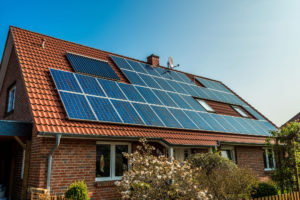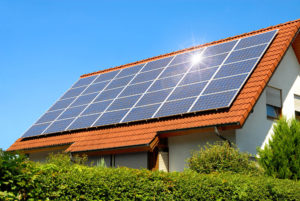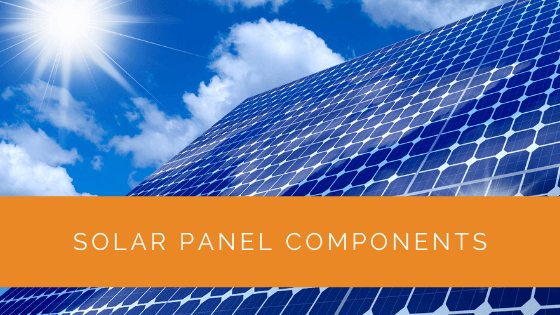Solar panels are playing a significant role in the pursuit of sustainable and eco-friendly energy solutions. However, it is crucial to understand the various components that constitute these photovoltaic wonders to harness their complete potential. In this guide, we will explore the fundamental elements of solar panels, explaining how they work and their importance in the transition towards a greener future.
Contents
- 1 Key Takeaways
- 2 Understanding More About Solar Panels
- 3 Key Components of Solar Panel
- 4 Why is Silicon Used for Making Solar Panels?
- 5 Case Study: Optimising Solar Panel Efficiency Through Component Quality
- 6 Expert Insights From Our Solar Panel Installers About Solar Panel Components
- 7 Discover the Power of Solar with Solar Panels Network
- 8 Is Solar Energy the Future?
Key Takeaways
- Solar panels consist of solar cells made from different layers of metals like silicon, phosphorus, and boron, and they collect solar energy from the sun to convert it into electricity through the photovoltaic effect.
- The major components of a typical solar panel include silicon solar cells, a metal frame, a glass sheet, a standard 12V wire, and a bus wire.
- There are different types of solar panels, including monocrystalline silicon panels, polycrystalline silicon panels, and thin-film solar panels, each with varying efficiency and cost. Silicon is the predominant material used in solar panels due to its availability, efficiency, and longevity.
Understanding More About Solar Panels
A solar panel consists of solar cells. These panels collect solar energy from the sun and convert it into electricity. These cells are made from different layers of metals like silicon, phosphorus, and boron.
The silicon layer acts as a conductor, allowing the flow of energy. Boron imparts a positive charge, and the phosphorus acts as the negative layer.
The functioning of solar panels is very simple. A solar panel has 60 -90 solar cells. When the sun’s rays strike the upper layer of the panel, it pushes the electrons from the silicon and moves into the electric field generated by the solar cells.
This results in a directional current flow converted into usable solar power. This process is called the photovoltaic effect, so the solar panels are also known as photovoltaic panels.

Key Components of Solar Panel
A typical solar panel comprises five major components:
- Silicon solar cells
- A metal frame
- A glass sheet
- A standard 12V wire
- Bus wire
Delving Deeper into Key Components of Solar Panels
Silicon solar cells
Solar cells play a pivotal role in harnessing the sun’s energy. These convert solar light into electric power via the photovoltaic effect. These solar cells are arranged between the glass panels. The silicon cells interact with the glass wafer sheet, thus creating an electric charge.
The solar cells also impact the efficiency and cost of the solar power system. Unlike earlier times, solar cells are far more efficient. The efficiency of a solar panel is directly proportional to solar cells.
Types of Solar Panels
Apprehensions surround the efficacy of the solar energy system, especially in regions like the UK where the temperature plummets below zero and sun rays become rare.
However, there has been a considerable improvement in the efficiency of solar panels. Different types of solar panels offer different efficiency, and here we will highlight the popular types.
- Monocrystalline silicon panels– As evident from its name, these are made of a single crystal.
- Polycrystalline silicon panels- It has several silicon crystals. However, these panels are not as efficient as monocrystalline ones but are cheaper.
- Thin-film solar panels– These are made from amorphous silicon. However, they are not so efficient.
Tabular Representation of the different types of solar cells
| Type | Efficiency | Benefits | Downsides |
|---|---|---|---|
| Monocrystalline Solar Panels are also called Mono-SI | These offer the efficiency of approximately 20% | Offers higher efficiency Good for commercial use High lifetime value | It is expensive |
| Polycrystalline Solar Panels or p-Si | These offer the efficiency of approximately 15% | Low-cost option | These are sensitive to a higher temperature |
| Amorphous Silicon Solar Panels or A-SI | These offer the efficiency of around 7-10% | Lower in cost They are flexible | Shorter lifespan |
| Concentrated Photo Voltaic Cell | These are high efficiency and proved the energy-efficiency of 41% | High performance | Solar tracker and cooling system are important to ensure its efficient performance |
Metal frame
The next important component of the solar power system is a metal frame, usually made of aluminium. The metal frame keeps everything together and acts as a protective layer to combat inclement weather.
Glass sheet
This glass sheet is 6-7 millimetres thick. In addition to the metal framing, the glass sheet also plays an integral role in protecting the solar cells. It enhances the solar panel’s durability and covers the solar cells.
Within the glass case, there is a protective back sheet. It helps in reducing heat dissipation and prevents humidity buildup in the panel. The right temperature of the panel plays a pivotal role in ensuring its efficiency. If the temperature exceeds the desired amount, it can lower the solar panel output.
Thus reducing the efficiency of the solar power system. Hence, most PV manufacturers ensure that the panel’s temperature is maintained and there is no overheating.
Standard 12V wire
The wiring regulates energy transfer to the inverter. Hence, it impacts the efficiency of the solar power system.
Bus wire
This wire is used to connect the solar cells parallelly. A solder layer covers these; the wires are thick enough to carry the electric current.

Why is Silicon Used for Making Solar Panels?
As mentioned above, the material of solar panels impacts its efficiency. Silicon is prominently used in solar panels. It acts as a semiconductor, allowing the flow of current. The beneficial properties of solar panels make them so useful for solar panels. These properties are
- Availability in abundance. Silicon is easily available and hence aids in large-scale production.
- Silicon is easy to optimise, i.e. it easily triggers the photovoltaic effect, thus promoting efficient electricity production.
- It has a longer life. Silicone has a longer life span, thus making it a valuable material for solar panel construction.
Silicon is predominantly material for solar panels; around 95% of solar panels are silicon. However, there are experiments on using organic photovoltaic cells.
Case Study: Optimising Solar Panel Efficiency Through Component Quality
Background
At Solar Panels Network, our mission is to advance the adoption of solar energy by ensuring high-quality installations that maximise efficiency and longevity. A recent project provided an excellent opportunity to demonstrate the importance of understanding and utilising the best components in solar panels.
Project Overview
Our team was approached by a residential client interested in transitioning to solar energy to reduce electricity costs and their carbon footprint. The client’s property, located in a region with varied weather conditions, presented unique challenges for solar panel installation, particularly concerning the efficiency of energy conversion during cloudy days.
Implementation
- Silicon Solar Cells: We selected high-efficiency monocrystalline silicon cells for their superior performance and longevity.
- Metal Frame: An aluminium frame was chosen for its strength and resistance to corrosion, ensuring the durability of the installation.
- Glass Sheet: We used tempered glass with anti-reflective coating to protect the solar cells and optimise light absorption.
- Standard 12V Wire: High-quality wiring was installed to ensure efficient energy transfer to the inverter.
- Bus Wire: Solder-coated bus wires were used to connect the solar cells, ensuring stable and reliable electricity flow.
Results
- Increased Efficiency: The use of monocrystalline silicon cells resulted in a notable increase in energy conversion efficiency, particularly during periods of low sunlight.
- Enhanced Durability: The robust aluminium frame and tempered glass sheet provided excellent protection against adverse weather conditions, reducing maintenance needs.
- Optimal Energy Transfer: High-quality wiring and bus wires facilitated efficient energy transfer, minimising energy loss.
- Customer Satisfaction: The client reported a significant reduction in electricity bills and expressed satisfaction with the overall system performance.
Summary
The project underscored the importance of selecting high-quality components in solar panel installations. By focusing on the efficiency and durability of key elements such as silicon solar cells, metal frames, and wiring, we were able to deliver a solution that not only met but exceeded the client’s expectations. This case study highlights our commitment to using the best materials and practices to ensure optimal performance and customer satisfaction in every solar installation we undertake.
Expert Insights From Our Solar Panel Installers About Solar Panel Components
Understanding the core components of solar panels, such as silicon solar cells and metal frames, is crucial for optimising their performance and longevity. It’s these details that enable us to tailor installations to the specific needs of each client, ensuring maximum energy efficiency.
Senior Solar Technician
The use of silicon in solar panels is a testament to its versatility and effectiveness as a semiconductor. Its ability to sustain a longer lifespan and maintain efficiency under various conditions makes it the preferred choice in most installations.
Solar Systems Engineer
The design and quality of components like bus wires and glass sheets are often overlooked, yet they play a pivotal role in the durability and overall efficiency of the solar panels. Paying attention to these details can significantly impact the long-term benefits of solar energy systems.
Lead Installer
Discover the Power of Solar with Solar Panels Network
Are you navigating the world of solar installations? Look no further than Solar Panels Network, the UK’s trusted partner in harnessing the sun’s potential. Our dedication goes beyond just installations; we’re on a mission to transform how homeowners and businesses across the UK perceive and utilise energy. By choosing us, you’re reducing your carbon footprint and making a smart financial move that promises savings for years ahead. Contact us today and embark on your solar journey.
Is Solar Energy the Future?
The power companies and the government continue to address environmental issues and climatic change. One of the key questions most power companies address is adopting the eco-conscious energy production method. The US’s solar energy capacity has grown by 50% and reached 76 gigawatts. A conscious effort to adopt a more sustainable energy source will bring change.
Many people have also realised the importance and benefit of solar power, so they are also inclined toward solar panel installation. However, cost remains an area of concern. The governments in various nations are offering subsidies on solar energy, thus promoting its use.
The future is all about solar power and harnessing solar energy. One of the prominent reasons for the growing popularity of solar energy is that it produces no hazardous emissions. Hence, it is a more sustainable and environmentally friendly option.
About the Author
Solar Panels Network stands at the forefront of solar energy solutions, driven by a team of seasoned solar engineers and energy consultants. With over decades of experience in delivering high-quality solar installations and maintenance, we are committed to promoting sustainable energy through customer-centric, tailored solutions. Our articles reflect this commitment, crafted collaboratively by experts to provide accurate, up-to-date insights into solar technology, ensuring our readers are well-informed and empowered in their solar energy decisions.

